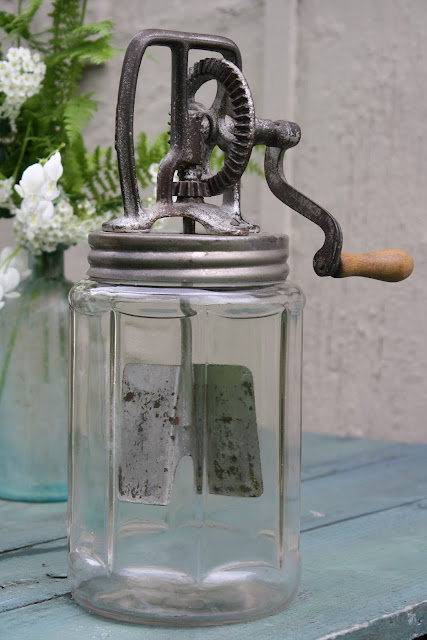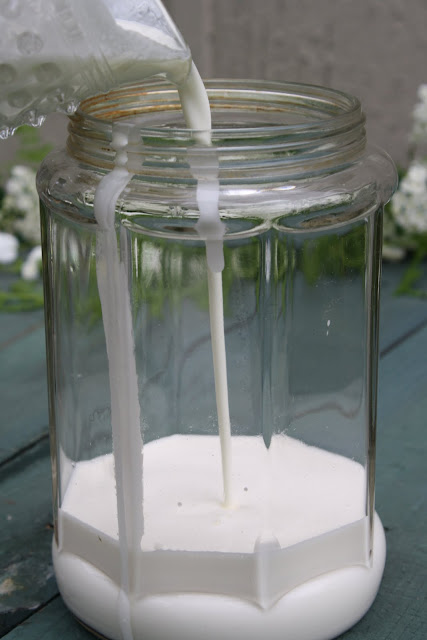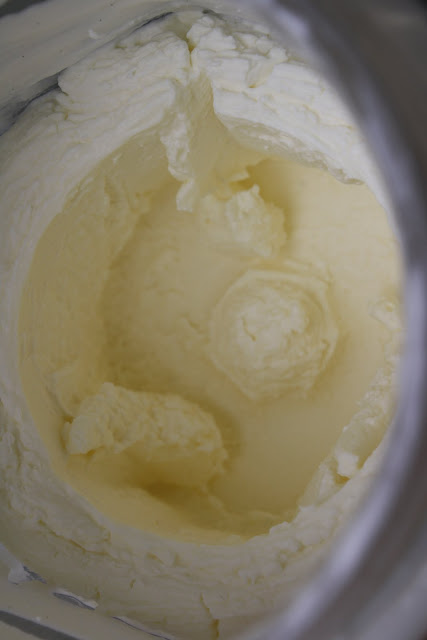When a beloved elderly neighbor knocks on my door with a bag of his own home-grown rhubarb, there's only one thing to do - make something special and share it with him. Which is what I did today. It was way too hot (did I miss spring?) to even think about turning on the oven to bake strawberry rhubarb pies, so what to do? Concoct a hybrid ice cream recipe and let my trusty ice-cream maker do the heavy lifting. The result? Strawberry Rhubarb bliss in a bowl with ridiculously divine pomegranate sauce that tastes as good licked straight off the sticky spoon as it does drizzled on your favorite ice-cream.
Once it was made and frozen to just the right consistency, I loaded up a bowl and sent my son off on his long board to deliver the goods. Thank you Mr. Higgins - you're the man and I so appreciate you and your kindness.
Ice Cream
Rhubarb
Pomegranate Sauce
Strawberry Rhubarb Ice Cream (way adapted from Williams Sonoma, Ice Cream Cook Book)
2 cups chilled heavy cream
1 cup whole milk
1/2 cup sugar
pinch of salt
1 tsp. vanilla extract
1 cup fresh strawberries, stemmed and coarsely chopped
1 cup rhubarb, ends trimmed and chopped into 3/4 inch pieces
1 Tbsp. fresh squeezed lemon juice
1/2 cup sugar (for rhubarb)
In a bowl combine the cream and milk. Add the sugar and salt and whisk until the sugar begins to dissolve. Stir in the vanilla. Cover and refrigerate for about 3 hours (and up to 8).
In a bowl, using a fork, or potato masher, mash half the chopped strawberries into chunks.
Add the remaining coarsely chopped strawberries to the bowl and toss.
Cover and refrigerate for an hour.
Meanwhile, chop rhubarb.
In a medium sized non-reactive sauce pan, combine rhubarb, lemon juice and 1/2 cup sugar.
Bring to a boil, turn down the heat and simmer stirring constantly until very soft (about 6-8 minutes).
Pour into a bowl and refrigerate for an hour.
Pour the milk mixture into an ice-cream maker and freeze according to manufacturer instructions. When ice-cream reaches the consistency of thick whipped cream, add the strawberries and rhubarb.
Churn until just blended. Cover and freeze until firm.
Pomegranate Sauce
(Hardness up on contact with ice-cream)
1 cup pomegranate juice
1/2 cup sugar
Combine pomegranate juice and sugar in a non-reactive pan.
Bring to a boil, then lower heat and simmer until syrup becomes thick.
Pour into a clean jar.
Serve at room temperature or warm (can be microwaved for a minute or two to soften)
Refrigerate for up to 2 weeks.


































































